-
class sklearn.linear_model.LinearRegression(fit_intercept=True, normalize=False, copy_X=True, n_jobs=1)[source] -
Ordinary least squares Linear Regression.
Parameters: fit_intercept : boolean, optional
whether to calculate the intercept for this model. If set to false, no intercept will be used in calculations (e.g. data is expected to be already centered).
normalize : boolean, optional, default False
If True, the regressors X will be normalized before regression. This parameter is ignored when
fit_interceptis set to False. When the regressors are normalized, note that this makes the hyperparameters learnt more robust and almost independent of the number of samples. The same property is not valid for standardized data. However, if you wish to standardize, please usepreprocessing.StandardScalerbefore callingfiton an estimator withnormalize=False.copy_X : boolean, optional, default True
If True, X will be copied; else, it may be overwritten.
n_jobs : int, optional, default 1
The number of jobs to use for the computation. If -1 all CPUs are used. This will only provide speedup for n_targets > 1 and sufficient large problems.
Attributes: coef_ : array, shape (n_features, ) or (n_targets, n_features)
Estimated coefficients for the linear regression problem. If multiple targets are passed during the fit (y 2D), this is a 2D array of shape (n_targets, n_features), while if only one target is passed, this is a 1D array of length n_features.
residues_ : array, shape (n_targets,) or (1,) or empty
Sum of residuals. Squared Euclidean 2-norm for each target passed during the fit. If the linear regression problem is under-determined (the number of linearly independent rows of the training matrix is less than its number of linearly independent columns), this is an empty array. If the target vector passed during the fit is 1-dimensional, this is a (1,) shape array.
New in version 0.18.
intercept_ : array
Independent term in the linear model.
Notes
From the implementation point of view, this is just plain Ordinary Least Squares (scipy.linalg.lstsq) wrapped as a predictor object.
Methods
decision_function(\*args, \*\*kwargs)DEPRECATED: and will be removed in 0.19. fit(X, y[, sample_weight])Fit linear model. get_params([deep])Get parameters for this estimator. predict(X)Predict using the linear model score(X, y[, sample_weight])Returns the coefficient of determination R^2 of the prediction. set_params(\*\*params)Set the parameters of this estimator. -
__init__(fit_intercept=True, normalize=False, copy_X=True, n_jobs=1)[source]
-
decision_function(*args, **kwargs)[source] -
DEPRECATED: and will be removed in 0.19.
Decision function of the linear model.
Parameters: X : {array-like, sparse matrix}, shape = (n_samples, n_features)
Samples.
Returns: C : array, shape = (n_samples,)
Returns predicted values.
-
fit(X, y, sample_weight=None)[source] -
Fit linear model.
Parameters: X : numpy array or sparse matrix of shape [n_samples,n_features]
Training data
y : numpy array of shape [n_samples, n_targets]
Target values
sample_weight : numpy array of shape [n_samples]
Individual weights for each sample
New in version 0.17: parameter sample_weight support to LinearRegression.
Returns: self : returns an instance of self.
-
get_params(deep=True)[source] -
Get parameters for this estimator.
Parameters: deep : boolean, optional
If True, will return the parameters for this estimator and contained subobjects that are estimators.
Returns: params : mapping of string to any
Parameter names mapped to their values.
-
predict(X)[source] -
Predict using the linear model
Parameters: X : {array-like, sparse matrix}, shape = (n_samples, n_features)
Samples.
Returns: C : array, shape = (n_samples,)
Returns predicted values.
-
residues_ -
DEPRECATED:
residues_is deprecated and will be removed in 0.19Get the residues of the fitted model.
-
score(X, y, sample_weight=None)[source] -
Returns the coefficient of determination R^2 of the prediction.
The coefficient R^2 is defined as (1 - u/v), where u is the regression sum of squares ((y_true - y_pred) ** 2).sum() and v is the residual sum of squares ((y_true - y_true.mean()) ** 2).sum(). Best possible score is 1.0 and it can be negative (because the model can be arbitrarily worse). A constant model that always predicts the expected value of y, disregarding the input features, would get a R^2 score of 0.0.
Parameters: X : array-like, shape = (n_samples, n_features)
Test samples.
y : array-like, shape = (n_samples) or (n_samples, n_outputs)
True values for X.
sample_weight : array-like, shape = [n_samples], optional
Sample weights.
Returns: score : float
R^2 of self.predict(X) wrt. y.
-
set_params(**params)[source] -
Set the parameters of this estimator.
The method works on simple estimators as well as on nested objects (such as pipelines). The latter have parameters of the form
<component>__<parameter>so that it?s possible to update each component of a nested object.Returns: self :
-
linear_model.LinearRegression()
Examples using
2025-01-10 15:47:30
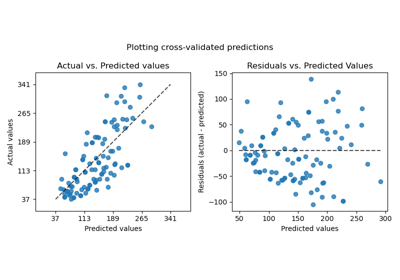
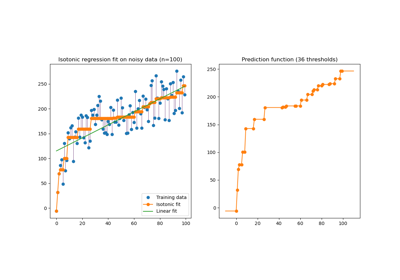

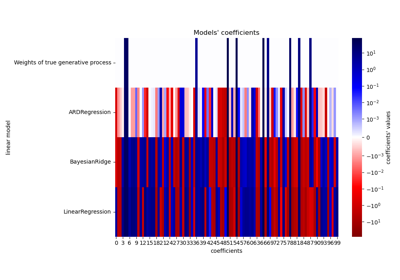

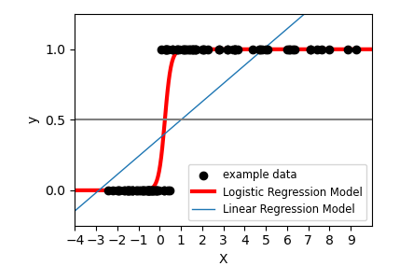
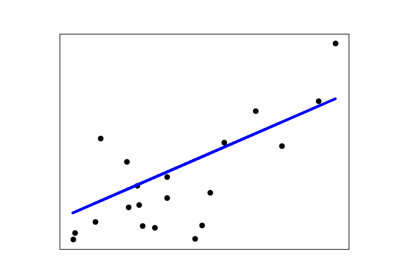
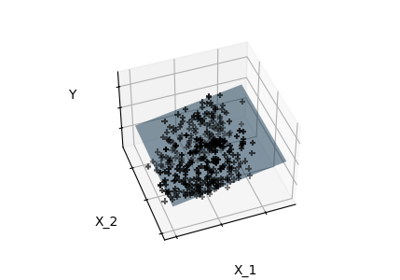
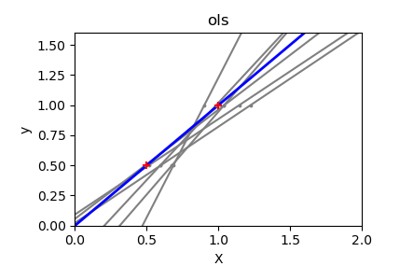
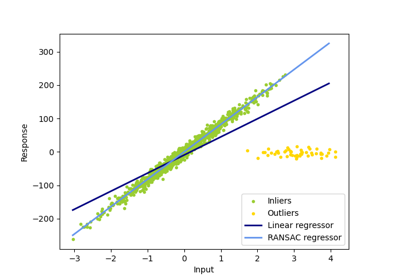
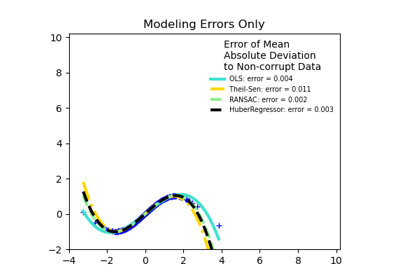
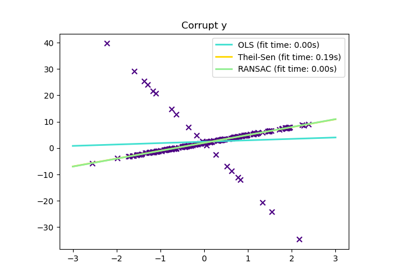
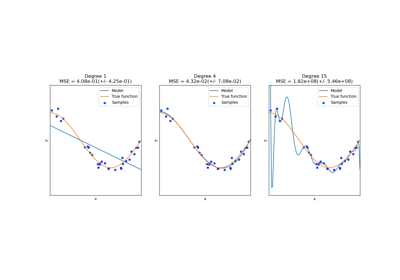
Please login to continue.